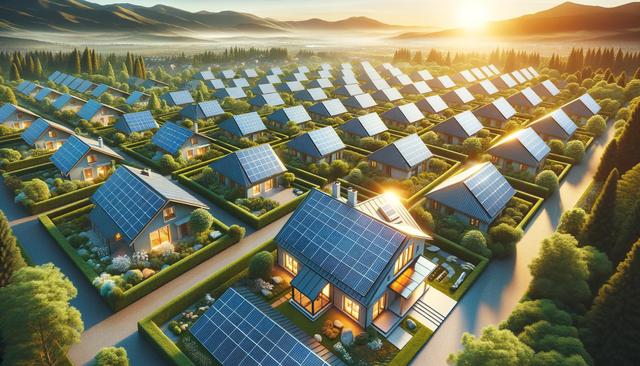What Is Solar Roofing?
Solar roofing refers to the integration of solar technology directly into a building’s roof structure, allowing homeowners to generate renewable energy without the need for traditional solar panels. Unlike mounted solar panels, solar roofing systems are designed to resemble standard roofing materials while still capturing sunlight and converting it into electricity. This type of roofing offers a more seamless aesthetic and can be an appealing option for new constructions or major roof replacements.
Solar roofing typically uses photovoltaic (PV) cells embedded in shingles or tiles. These PV materials are made from semiconductors that absorb sunlight and generate direct current (DC) electricity. An inverter then converts this DC into alternating current (AC) electricity for household use. Excess energy can often be stored in home battery systems or fed back into the grid, depending on local regulations and utility arrangements.
Advantages of Solar Roofing
There are several compelling reasons why homeowners are considering solar roofing as a viable alternative to traditional roofing and solar panel systems. Some of the main benefits include:
- Aesthetic Integration: Solar roofing blends in with standard roofing materials, maintaining the home’s architectural integrity.
- Space Efficiency: Since the solar components are part of the roofing itself, there’s no need for additional surface area for solar panels.
- Energy Savings: By generating electricity on-site, homeowners can reduce their reliance on the power grid and lower utility bills.
- Environmental Impact: Solar roofing supports a cleaner energy future by reducing carbon footprints and fossil fuel dependency.
Additionally, in areas with strong sunlight exposure, solar roofing can be a practical and efficient way to harness renewable energy year-round. Many systems also qualify for local or federal incentives, which can help offset initial installation costs.
Installation and Maintenance Considerations
Installing solar roofing is more complex than laying traditional shingles or mounting solar panels. It typically requires coordination between roofing professionals and solar energy technicians. Homeowners considering this upgrade should ensure their roof structure is suitable and that local building codes support integrated solar systems.
Key considerations before installation include:
- Roof Orientation: South-facing roofs typically receive the most sunlight in the northern hemisphere.
- Roof Condition: A structurally sound roof is essential for solar roofing installation.
- Local Regulations: Permits, incentives, and interconnection agreements vary by region and may affect project timelines.
Maintenance for solar roofing is generally minimal, as the systems are built to endure weather elements. However, periodic inspections and cleanings may be necessary to ensure optimal performance. It’s also important to monitor energy production through the system’s tracking software or app.
Costs and Financial Incentives
One of the biggest factors influencing the decision to install solar roofing is the cost. While it usually carries a higher upfront price than traditional roofing, the long-term energy savings can be significant. The total cost depends on factors like roof size, material choice, labor, and system capacity.
To help make solar roofing more accessible, various financial incentives may be available:
- Tax Credits: Many governments offer investment tax credits for solar energy systems.
- Rebates: Local utilities or state programs may provide rebates to reduce installation costs.
- Net Metering: Homeowners can receive credits for excess energy sent back to the grid.
- Financing Options: Loans, leases, or power purchase agreements (PPAs) can make solar roofing more affordable upfront.
Evaluating the return on investment is crucial. Over time, the reduction in electricity bills and potential earnings from surplus energy can offset the higher initial expenditure.
Is Solar Roofing Right for You?
Deciding whether solar roofing is the right choice depends on several personal and situational factors. Homeowners should assess their energy needs, budget, and long-term goals. Solar roofing can be particularly advantageous for those building a new home or replacing a roof, as it combines two major investments into one.
It’s also worth consulting with professionals to perform an energy audit and evaluate roof suitability. Other factors to weigh include:
- Local climate and average sunlight exposure
- Future energy price trends
- Environmental priorities and sustainability goals
- Length of home ownership plans (since long-term savings increase over time)
While solar roofing may not be ideal for every property, it presents a forward-thinking solution for those committed to energy efficiency, aesthetics, and environmental responsibility.
Conclusion: A Smart Step Toward Sustainable Living
Solar roofing is an innovative option for homeowners looking to combine form and function in their pursuit of greener living. By integrating solar energy production directly into the roof, it offers a clean, space-saving alternative to traditional power sources. Though the initial investment may be higher, the long-term benefits in cost savings, energy independence, and environmental impact make it a worthwhile consideration for many. As technologies advance and incentives expand, solar roofing continues to gain traction as a practical, sustainable home improvement.




Leave a Reply